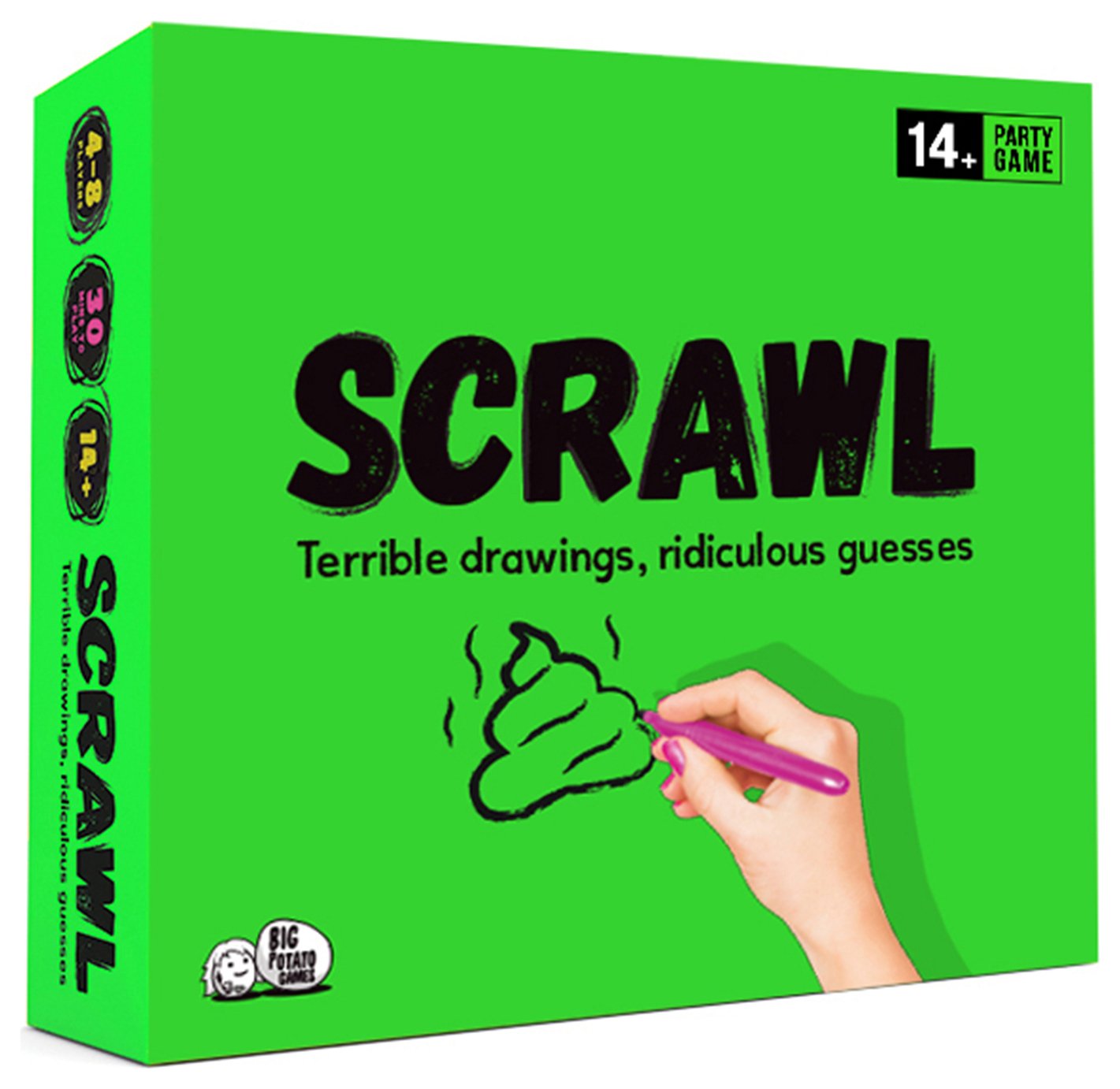


When guessing, I often find myself trying to make a common phrase from the picture before me. You see, it doesn’t really matter how well you can draw, as the game is more funny when the drawing is woeful! Even good drawings can lead to bad guesses. However, he gave it a go and relaxed into it. I don’t think he would mind me saying it isn’t his forte in life. Harrison (12) isn’t blessed with the skills of Da Vinci. With the right crowd it won’t outstay its welcome. The more players the merrier, but this does extend the length of the game. However, quicker drawers or guessers may have slightly more downtime. They are crowned the victor and everyone must bow to their Scrawl skills.Īll players are drawing and writing their guesses down at the same time. Play continues until someone gets two more points than there are players. Once the story has been revealed, a player is awarded a point for the best guess or doodle. At this point each player reveals the journey, starting with the scenario card, then the first drawing and so on. Play continues in this way, alternating between drawing and describing, until you get your original numbered board back. Again, a blank Scrawl sheet is added to the pad and play is passed on with the next player having to draw what is now written on the card. This player has to become art connoisseur and write down a description of what they believe has been drawn. Once everyone has completed their masterpiece, they attach another blank Scrawl sheet to their board and pass it to their left. Players then doodle their best interpretation of the card. The latter is my preference as it gives everyone a chance from the start. You can either pick one of the four colours on the card and everyone draws that one, or for a slightly easier and perhaps more family friendly option, each player can choose one of the four options on the card. They are also issued with a scenario card. Every player gets a numbered player board, clip and blank scrawl sheet. Both versions of Scrawl seat 4-8 players.


 0 kommentar(er)
0 kommentar(er)
